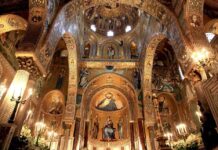The Netherlands, a country belonging to North-West Europe, is spread over an area of 41543 square kilometers. In terms of size, the Netherlands is a smaller country than Sri Lanka. Because the Netherlands has a long history, there are many old buildings.
Also, the Netherlands is one of the most beautiful countries in Europe. Therefore, every year many tourists come to enjoy the wonders of the Netherlands. Here are five famous tourist events that tourists visiting the Netherlands must see.
1). Kokenhof Park
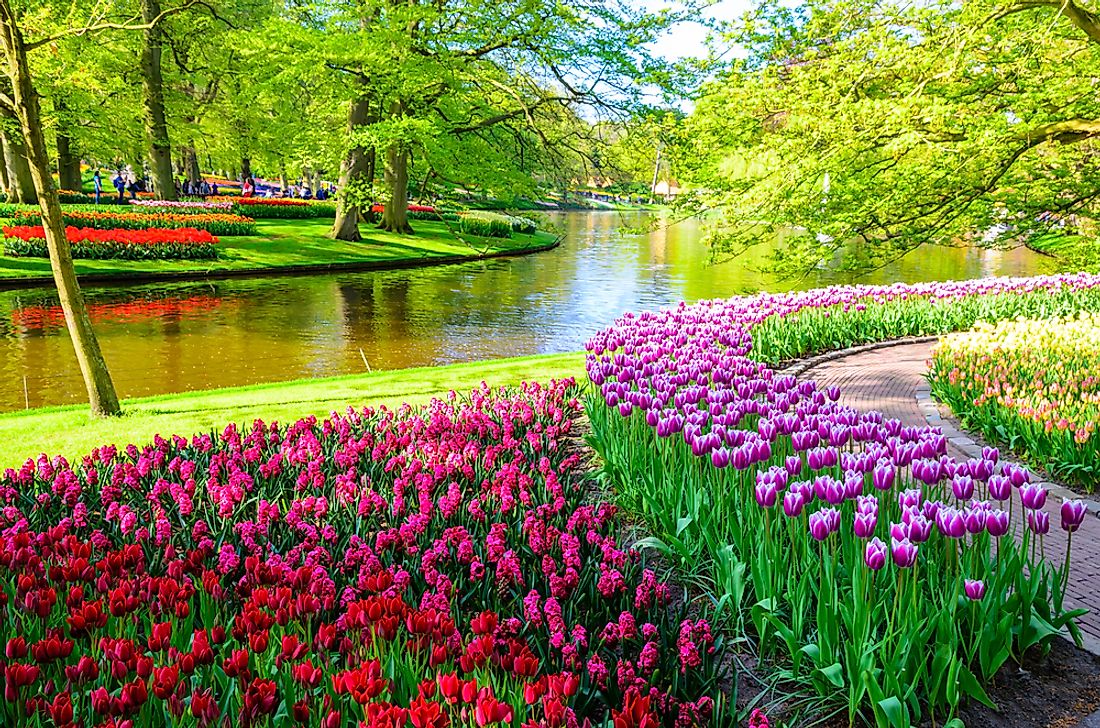
Among the most beautiful flower gardens in Europe today is the Kokenhof Garden located in Lis, Netherlands. Known as the Garden of Europe, it is spread over an area of 79 acres. This park, which has a history of more than 7 centuries, was started in the year 1949. A group of 20 leading flower growers in the Netherlands joined to start this garden.
The park, which was created in a planned manner, was opened for tourists in 1950. Tourists who were attracted by the beauty of the flower garden came to see the flower garden without breaking the vine. As a result, 236,000 people visited the Kokenhof Gardens within the first year.
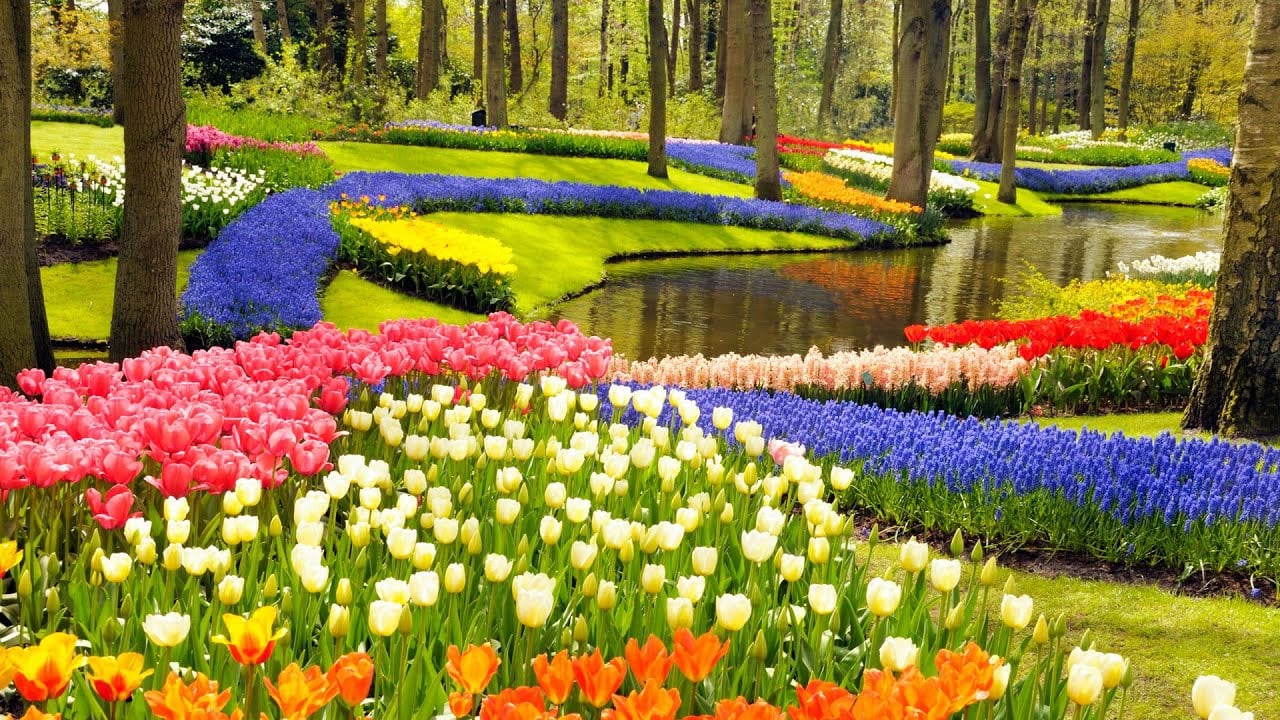
Since then, it has become the main park in the Netherlands and looks like a paradise in spring. That’s because the park is filled with colorful flowers in the spring. A large number of tulips of different varieties are found in this garden.
Flowers such as roses, daffodils, carnations, lilies, irises and orchids can also be seen here. About 7 million flower plants are planted in this garden every year. There is a staff of 30 people working full-time for that.
The Kokenhof Gardens are open to the public in spring. It is usually open from March 24 to May 15. During that season, a tulip flower exhibition is held in this garden. Tourists from all over the world come here to see it. Accordingly, in the spring of 2019, as many as 1.5 million tourists had come here. It was recorded as the largest number of people who came to visit this park in a year.
2). Old windmills in Kinderdach area
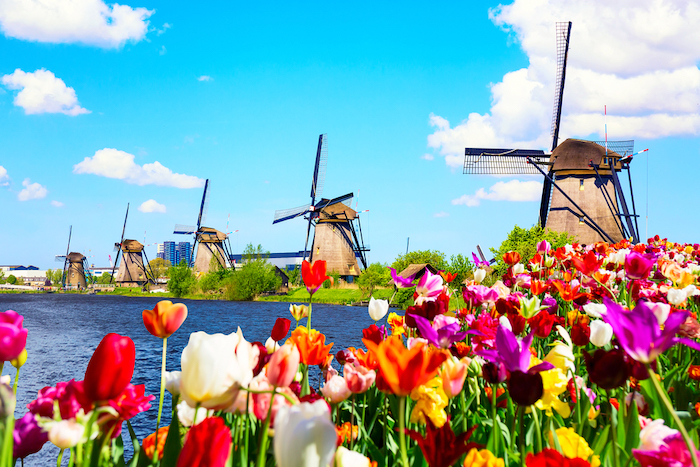
Many people think of the Netherlands when they hear the name “windmills”. That is because they have been using windmills for various purposes since many centuries. The Netherlands is a country with amazing topographical features. Some of its coastal areas are below sea level. As a result, the Netherlands has been threatened by floods for a long time.
Due to frequent floods in the Netherlands, many people died and many were displaced. They used various strategies to deal with the frequent floods. One of the tactics used by the Dutch was to generate power with windmills and remove excess water. 19 windmills built in that way are located in Kinderdak area.
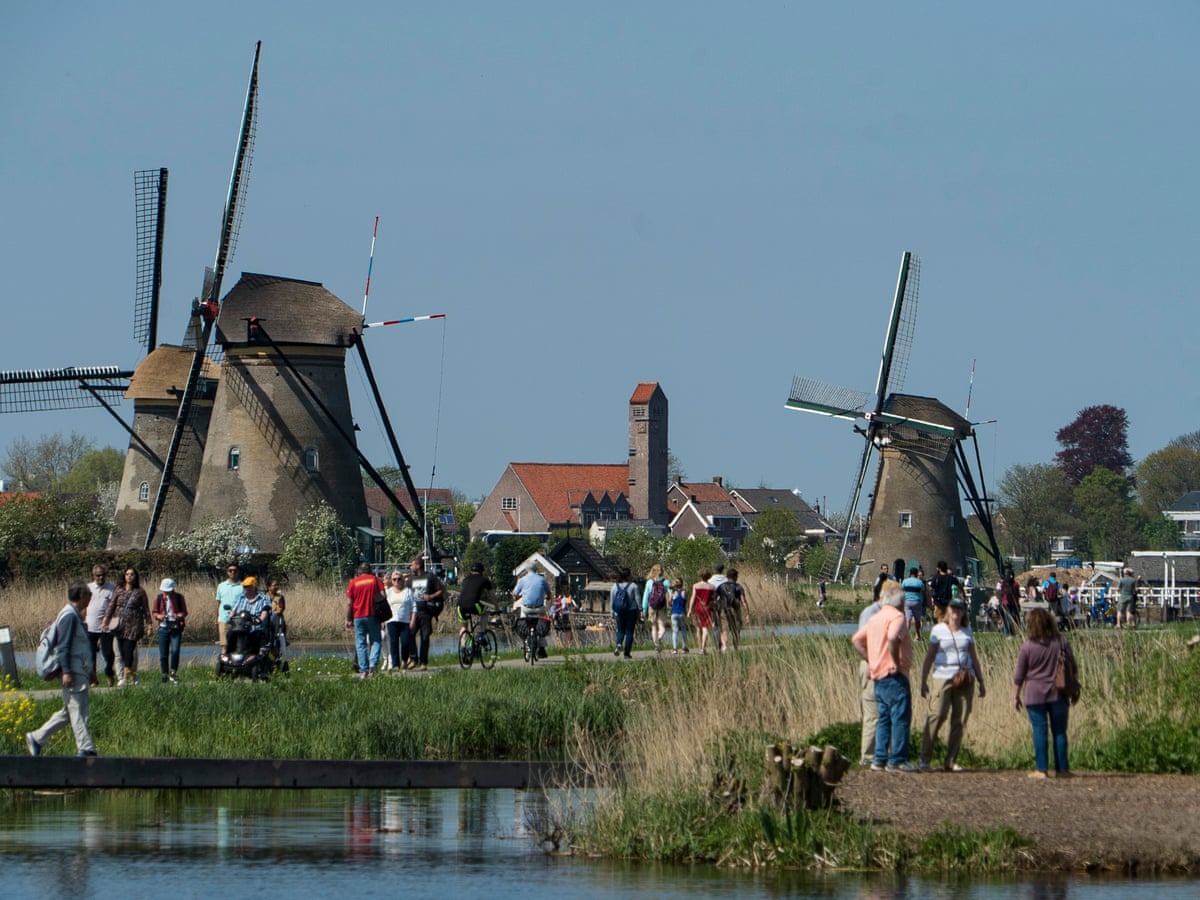
The rivers Lek and Noord meet in the Kinderdak region. As such, there were flood threats to that area since ancient times. Even though they dug large canals to protect themselves, it was not successful. By the 18th century, the Kinderdak area was prone to frequent floods. Therefore, during the period 1738-1740, these 19 windmills were built around the Kinderdak area.
Spread over 800 acres, the sails of the windmills in this complex are as long as 92 feet. Even though larger windmill complexes were built in the Netherlands later, this is still the most popular windmill complex in the Netherlands.
3). Alkmaar Cheese Market
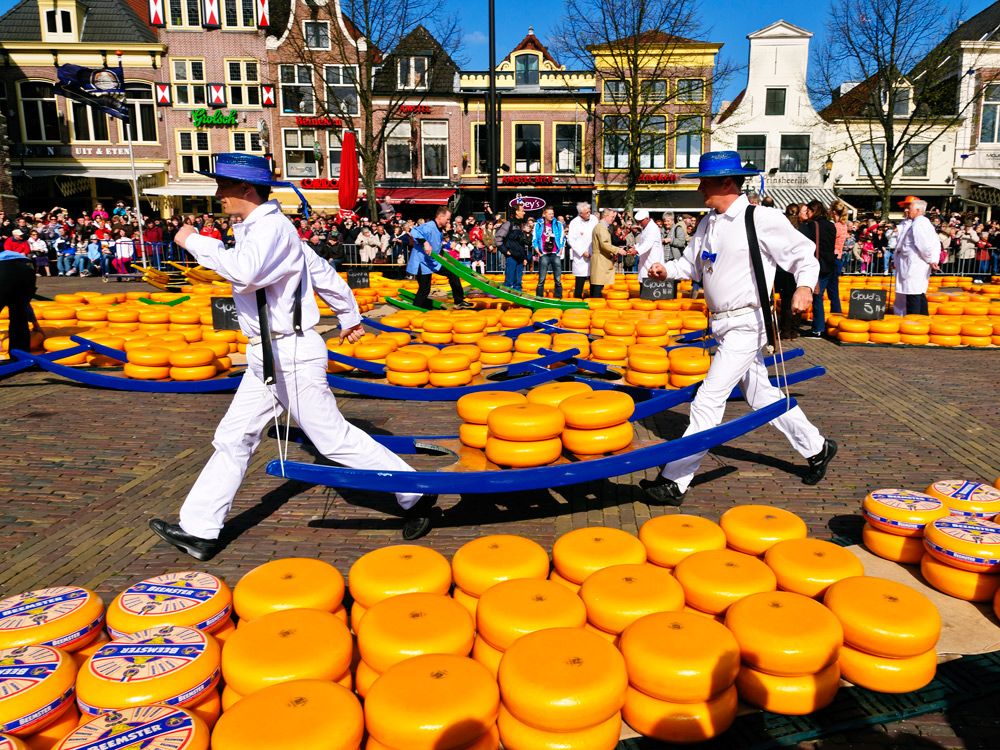
The Netherlands is one of the largest cheese producing countries in the world. Therefore, large-scale cheese markets can be seen in many parts of the country.
Such a cheese market can be found in Alkmaar, which is about 40 kilometers northwest of Amsterdam, the capital of the Netherlands. The cheese market has been operating since 1593 and is one of the oldest cheese markets in the Netherlands.

This famous cheese market is held every year from late March to early September. The market is open on Fridays from 10 am to 3 pm. As a tradition from the past, the cheese market was held only on Fridays
4). Bortange Fort
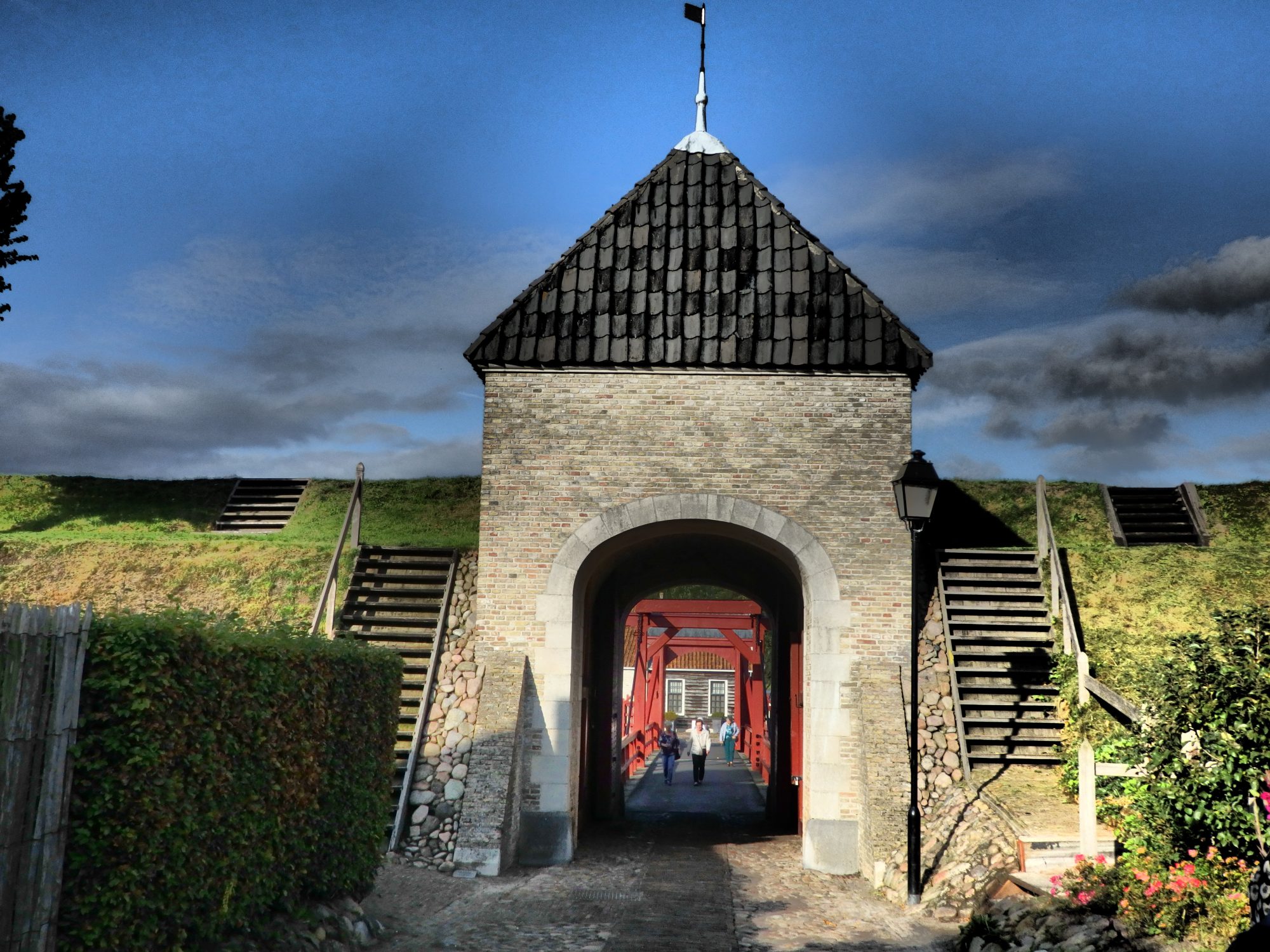
During the 17th and 18th centuries, Holland (now the Netherlands) was at the forefront of military power. So many countries were under their control. The Dutch conquered our country from 1658 to 1796. At that time, the Dutch created many beautiful forts in our country. Many glorious forts created by the Dutch, who had a unique ability to create such forts, can be seen around the Netherlands even today. Among them, Bortange Fort has a special place.
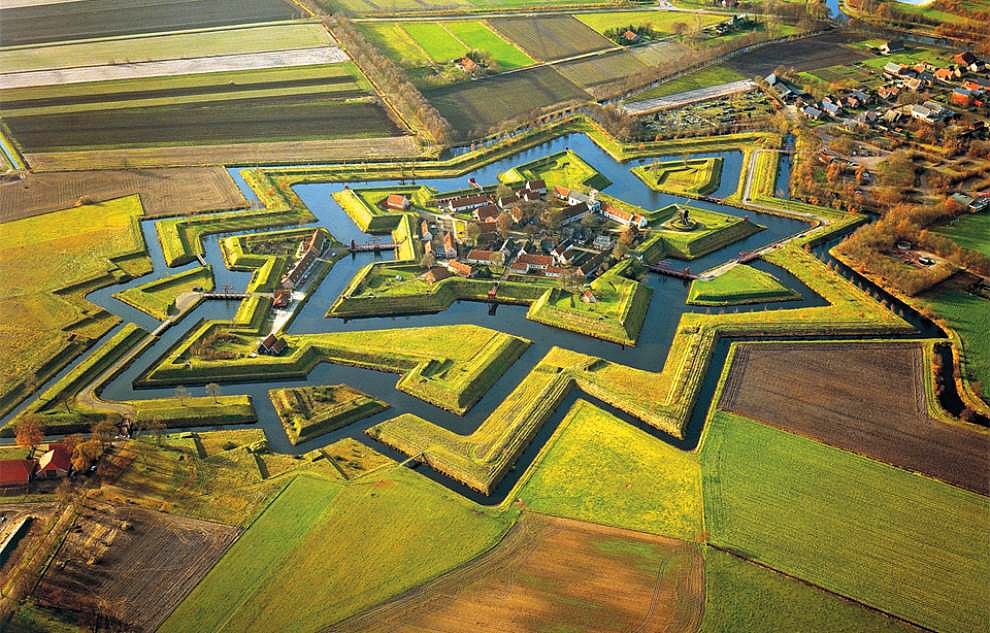
Between 1568-1648 there was a war between Holland and Spain. It later became known as the 80-year war. During that war, the fort built near Bortange village is known as Bortange Fort today.
Built in 1593, this fort looks like a star in the sky. Military barracks, a secure tunnel system and a moat system were built in this fort, which showed the world the ability of Dutch architecture. Therefore, this had become one of the safest fortresses in Holland.

This fort was used from 1593-1851 and fell into disrepair in the middle of the 20th century. Realizing the ancient value here, the country’s government started to restore it in 1960.
It is a special feature of the renovation to preserve the antiquity of this fort. After that, the huge fort, which was turned into a museum, is well preserved today.
5). Lake Eiselmeyer
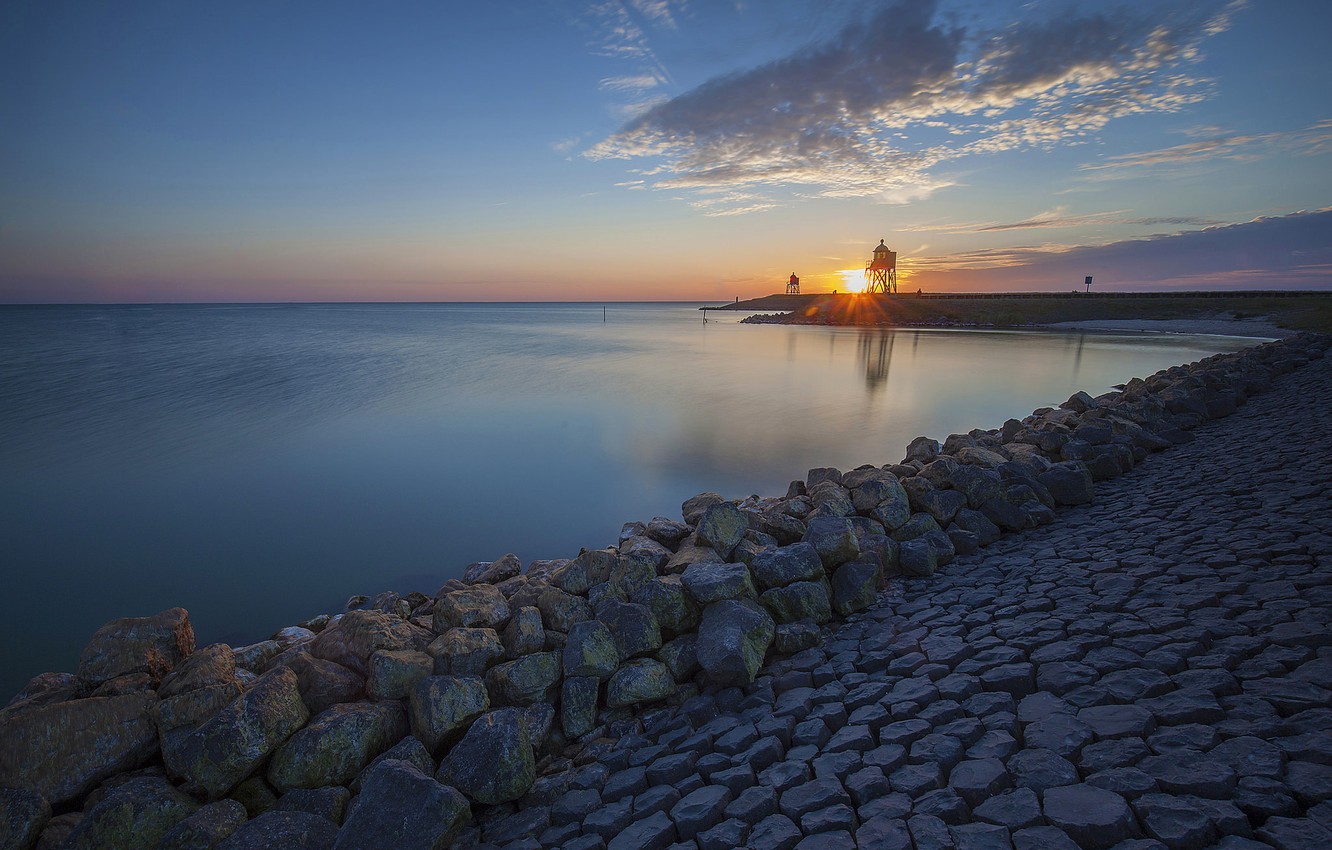
Iselmeer, the largest lake in the Netherlands, is spread over an area of 1100 square kilometers. It is believed that this lake, which is fed by the four rivers Amstel, Rhine, Isel and Wecht, was created about 2000 years ago. But in the 12th and 13th centuries, due to the floods caused by the rise of the sea level, the lake was filled with salt.
Therefore, after a while, the Eiselmeyer lake became a bay in the North Sea. Realizing the importance of this lake, the Dutch built a large dam to prevent water from entering the lake. But because it broke down from time to time, there was no permanent solution to the problem.
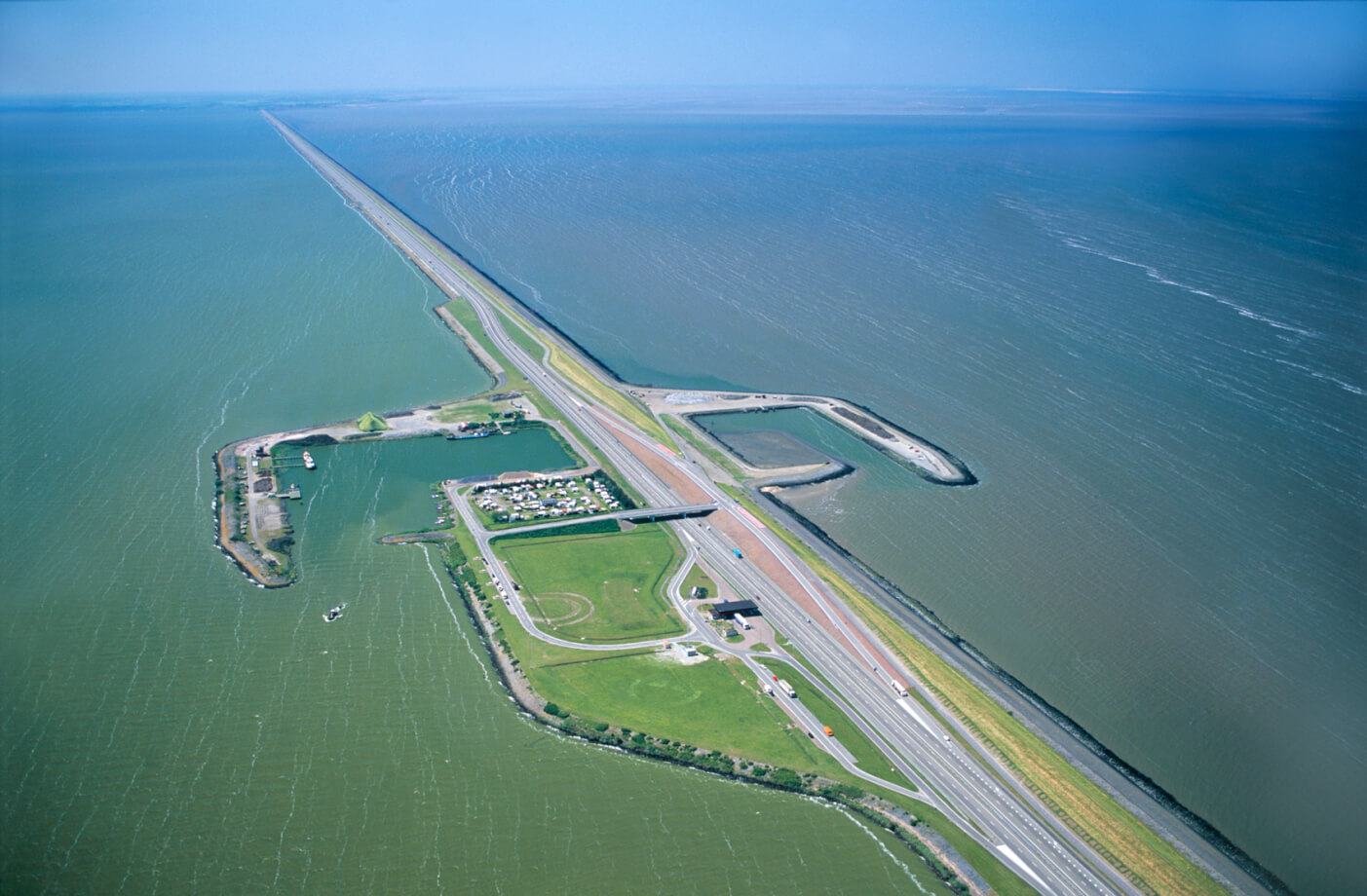
In this way, the problem that lasted for many centuries was solved in 1927-1932. That is with the construction of the 32 km long Afslodek dam to prevent the water from entering the lake. After that, Eiselmeyer, which became a fresh water lake, is used for fishing today.
This is also a great place for tourists to indulge in water sports. Named a Ramsay Wetland in 2000, this area is a valuable natural heritage located in the Netherlands.



